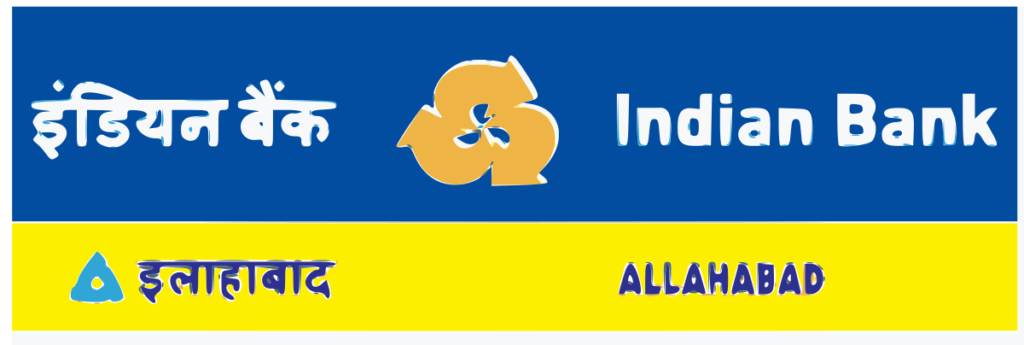Welcome to Daily Banking Digest, your premier source for the latest news and insights on May 07, 2024, focusing on banking, the economy, and finance. Our platform offers a comprehensive overview of the day’s most critical financial stories, market trends, and economic developments. Whether you’re a professional in the financial sector, an investor monitoring market movement, or someone interested in staying informed about the economic landscape, Daily Banking Digest provides reliable, up-to-date information.
Join our Telegram Channel for Daily PDF in your Inbox – Click Here
Table of Contents
Indian Airlines Poised to Capture Half of International Passenger Market by 2028: CRISIL
CRISIL predicts that Indian airlines will capture up to 50% of the country’s international air passenger traffic by 2027-28. This growth is attributed to increased aircraft deployment, new routes, and superior domestic connectivity compared to foreign carriers. The rising share in international traffic, which is more profitable than domestic, will strengthen the business profiles of Indian airlines.

Key Points:
Growth in International Passenger Traffic: – India’s international passenger traffic has surpassed pre-pandemic levels, reaching 70 million in fiscal 2024. – The compound annual growth rate (CAGR) for international passenger traffic is projected to be 10-11% over the next four fiscal years.
Indian Airlines’ Market Share: – Indian airlines’ share in international passenger traffic is expected to surge to 50% by 2027-28, up from 43% in the previous fiscal. – This growth is driven by additional aircraft deployment, new routes, and superior domestic connectivity.
Factors Contributing to Growth: – Increasing disposable incomes and easing visa requirements are boosting international travel. – The government’s focus on tourism is expected to increase inbound traffic. – Indian airlines have added 55 new international routes in the past 15 months. – They are deploying additional aircraft on short- and medium-haul routes and leveraging codeshare agreements.
Advantages of Indian Airlines: – Superior domestic connectivity compared to foreign airlines. – Ability to offer end-to-end international connectivity on a single ticket. – India’s geographic location as a potential hub for international travel.
Investment and Expansion: – Indian airlines are investing in wide-body and long-range narrow-body aircraft for network expansion. – They are adding new international routes and introducing long-haul non-stop flights. – This investment is expected to result in a CAGR of 14-15% in the international segment over the next four fiscals.
AIBEA Demands Inclusion of RRB Pay Revision in Industry-Wide Wage Settlement
The All India Bank Employees’ Association (AIBEA) is urging the Finance Ministry to announce wage revision for Regional Rural Banks (RRBs) staff, arguing that they perform similar duties as commercial bank employees. The association has requested the Finance Minister to issue a notification extending the recent wage settlement for commercial bank employees to RRBs.

Key Points:
AIBEA’s Demand for RRB Wage Revision – AIBEA is demanding wage revision for RRB staff to be part of the industry-level wage settlement. – The association argues that RRB staff perform the same job as commercial bank employees.
RRB Wage Revision History – RRB staff and officers’ wages were last revised in April 2021. – The revision followed the 11th Bipartite Settlement between IBA and bank employees in November 2020.
RRB Wage Parity – RRBs do not currently give mandate to the Indian Banks Association (IBA) to be covered by the Bipartite settlement. – The Supreme Court has ruled that wage parity should be maintained between commercial bank employees and RRB staff. – After each Bipartite Settlement, the government issues a notification to extend the wage increase to RRBs.
RRB Background – There are 43 RRBs in India as of 2021. – RRBs were established in 1975 to serve the credit needs of rural areas. – The government owns 50% stake in each RRB, while the Sponsor Bank has 35% and the State government has 15%.
Indian Bank’s Q4FY24 Net Profit Soars 55% to ₹2,247 Crore, Plans for 1,800 New Hires
Indian Bank has reported a significant increase in its earnings and profit for the March 2024 quarter and the full fiscal year FY24. The bank’s net profit grew by over 50% in both periods, driven by growth in operating profit, interest and non-interest income, and reduced provisions.

Key Points
Net Profit – Net profit increased by 55% to ₹2,247 crore in Q4FY24. – Net profit grew by 53% to ₹8,063 crore in FY24.
Operating Profit – Operating profit rose by 7% to ₹4,305 crore in Q4FY24. – Operating profit increased by 10% to ₹16,840 crore in FY24.
Interest Income – Interest income rose by 19% to ₹14,624 crore in Q4FY24. – Net interest income grew by 9% to ₹6015 crore in Q4FY24. – Net interest income rose by 15% to ₹23,274 crore in FY24.
Non-Interest Income – Non-interest income increased by 13% to ₹2,263 crore in Q4FY24.
Provisions – Provisions for NPA were lower at ₹900 crore in Q4FY24. – Provisions for NPA were significantly lower at ₹3,653 crore in FY24.
Gross NPA – Gross NPA was lower at 3.95% in Q4FY24.
Net NPA – Net NPA remained below 1% at 0.43% in Q4FY24.
Deposits and Advances – Total deposits grew by 11% to ₹688,000 crore in FY24. – Total advances rose by 13% to ₹533,773 crore in FY24.
RAM Loans – Retail loans grew by 15% to ₹104,735 crore in FY24. – Agriculture loans grew by 19% to ₹121,062 crore in FY24. – MSME loans grew by 6% to ₹84,121 crore in FY24.
Digital Channels – Business through digital channels reached ₹81,250 crore in FY24.
Hiring – The bank plans to hire about 1,800 people in FY25.
Galytix Unveils CreditX: An AI-Powered Credit Agent Solution for Indian Banks
Galytix, a London-based fintech, has introduced CreditX, a Generative AI-based Credit Agent solution for the Indian banking sector. CreditX automates credit-related tasks, enhancing productivity and enabling banks to provide credit faster, cheaper, and more efficiently. The solution addresses the credit gap in the MSME sector and aims to revolutionize credit lending in India.

Key Points
1. Introduction of CreditX – CreditX is a Generative AI-based Credit Agent solution launched by Galytix. – It automates credit-related tasks, enhancing productivity and efficiency.
2. Benefits of CreditX – Productivity gains of 20-30% at the front office level and 30-40% at the mid-office level. – Provides actionable insights for decision-making. – Addresses the credit gap in the MSME sector.
3. Challenges Addressed by CreditX – Absence of an end-to-end credit intelligence engine. – Reliance on Excel and Word for credit management. – Challenges in information gathering, credit memorandum preparation, credit decisions, post-approval monitoring, and risk reporting.
4. Features of CreditX – Automates routine tasks, allowing RMs and CAs to focus on high-value activities. – Offers flexible, accurate risk reporting empowered by data analytics. – Provides a tailored Credit Agent solution for banks.
5. Impact on Indian Banking Sector – CreditX is expected to revolutionize credit lending in India. – It aims to address challenges and offer unparalleled efficiency and accuracy.
Unity SFB’s Q4FY24 Financial Performance: Net Profit of ₹143 Crore, Emphasis on Technology Investments
Unity Small Finance Bank (Unity SFB) experienced significant growth in the fourth quarter of 2024, reporting a net profit of ₹143 crore, a reversal from the net loss of ₹52 crore in the same quarter of the previous year. The bank’s financial performance was driven by increased net interest income, deposits, and advances. Unity SFB plans to continue investing in technology and expand its digital offerings, including a mobile app and credit card business.

Key Points:
Net Profit: – Net profit of ₹143 crore in Q4 2024, compared to a net loss of ₹52 crore in Q4 2023.
Net Interest Income: – Increased by 55% to ₹281 crore in Q4 2024, from ₹181 crore in Q4 2023.
Deposits: – Total deposits surged by 142% to ₹6,505 crore as of March 2024.
Advances: – Net advances grew by 78% to ₹7,961 crore as of March 2024.
Technology Investments: – Unity SFB plans to increase investments in technology and roll out digital offerings, including a mobile app and credit card business.
Branch Network: – The bank’s branch network expanded to 377 outlets across 19 states and union territories as of March 2024.
Internationalization of Rupee: RBI Urged to Take Proactive Steps
Former RBI Governor Duvvuri Subbarao advocates for further internationalization of the rupee and reduced intervention in the foreign exchange market. He emphasizes the need for removing capital controls and enhancing transparency in government policies to improve public understanding and accountability.
Key Points:
Internationalization of the Rupee:
- RBI should pursue further internationalization of the rupee.
- Removal of capital controls and reduced intervention in the foreign exchange market are necessary.
Capital Controls:
- Full capital account convertibility is not essential for emerging economies like India.
- India should determine its own roadmap for capital convertibility.
Intervention in Foreign Exchange Market:
- RBI should adopt a less interventionist approach in the foreign exchange market.
Demystification of Budget and Policies:
- Government and financial regulators need to make the Budget and economic policies more understandable to the public.
- Communication should include details on GST collections, spending, and opportunity costs of freebies.
Bank of England’s Practice:
- Townhall meetings by the Bank of England provide accountability and public understanding.
- Demystification is crucial in countries with low awareness and literacy levels.
Transparency in FDI and Freebies:
- Government should clarify reasons for FDI dips and the implications of freebies.
- Public should be informed about the opportunity costs of freebies.
CASA Deposits Decline Sharply in FY24 as Term Deposits Gain Traction Amidst Deposit Challenges
During FY24, banks faced a decline in the share of current account (CA) and savings account (SA) deposits, known as CASA, due to increased reliance on term and bulk deposits. Despite elevated deposit rates, CASA ratios fell significantly, impacting lenders’ margins. However, some banks managed to recoup some lost share in the second half of the year.
Key Points:
CASA Ratio Decline: – CASA ratios declined by 40-730 bps year-on-year for banks that have declared their Q4 FY24 earnings. – The decline was faster in the first half of the financial year due to a shift towards higher-yielding term deposits.
Elevated Deposit Rates: – Banks are offering rates of up to 7% on high-value savings accounts and up to 7.5% on balances between ₹5-10 lakh. – Small finance banks offer even higher rates.
Bank Performance: – Large banks like ICICI Bank and Axis Bank managed to recoup some lost CASA share in the second half. – Mid-sized banks like Federal Bank and IndusInd Bank saw a decline in CASA ratios on quarter. – Smaller banks like South Indian Bank and DCB Bank maintained steady CASA ratios due to a slowdown in loan growth.
Outlier: Yes Bank – Yes Bank saw an increase in its CASA ratio both year-on-year and quarter-on-quarter due to a lower base and aggressive deposit mobilization.
Outlook: – Deposit mobilization is expected to remain under pressure for the next two quarters. – Rate cuts in the later part of FY25 may lead to some funds flowing back into the banking system, improving CASA ratios.
DGTR Proposes Anti-Dumping Duty on Water Treatment Chemical Imports from China and Japan
The Directorate General of Trade Remedies (DGTR) has recommended imposing anti-dumping duties on imports of Trichloro isocyanuric acid, a chemical used in water treatment, from China and Japan. The recommendation aims to protect the domestic industry from cheap imports.
Key Points:
- Recommendation: DGTR recommends provisional anti-dumping duty on imports of Trichloro isocyanuric acid from China and Japan.
- Applicant: Bodal Chemicals Ltd filed the application for the investigation.
- Duty Range: The recommended duty ranges from USD 170 to USD 870 per tonne.
- Decision-Making Process: DGTR recommends the duty, while the finance ministry makes the final decision within three months.
- Purpose of Anti-Dumping Probes: To protect domestic industries from below-cost imports.
- WTO Framework: Anti-dumping measures are imposed within the multilateral regime of the World Trade Organization (WTO).
- Objective: To ensure fair trade and provide a level playing field for domestic industries.
- Non-Restrictive Measure: Anti-dumping measures are not intended to restrict imports or increase product costs unjustifiably.
RBI Explores Offline Mode to Enhance Retail Digital Rupee Adoption
Reserve Bank of India (RBI) Governor Shaktikanta Das emphasizes the potential of the central bank digital currency (CBDC) to enhance financial inclusion and reduce cross-border transaction costs. While CBDC usage has increased, it still lags behind the Unified Payments Interface (UPI). The RBI is exploring measures to boost CBDC adoption, including offline transferability, programmability, and value-added services. Das reiterates the CBDC’s anonymity, similar to cash, and addresses concerns about its impact on banks by emphasizing its non-remunerative nature.
Key Points:
1. CBDC Adoption and UPI Preference: – CBDC transactions have reached 1 million per day, but UPI remains preferred among retail users.
2. Measures to Enhance CBDC Usage: – Offline transferability, programmability, and value-added services are being explored.
3. CBDC Anonymity: – CBDC will have the same level of anonymity as cash, with potential for permanent transaction deletion.
4. Impact on Banks: – CBDC is non-remunerative and non-interest bearing, mitigating disintermediation risks.
5. Interoperability with UPI: – CBDC QR codes can be combined with UPI QR codes for single points of acceptance. – Merchants can receive CBDC payments in UPI-linked bank accounts even without CBDC wallets.
6. Cross-Border Transactions: – CBDC has the potential to reduce cross-border transaction costs and provide a safer alternative to private digital currencies.
7. Wholesale CBDC Pilots: – Pilots are being conducted in the government securities market, interbank call money market, and instruments like commercial papers and certificates of deposits.
Permanent Transaction Deletion Enhances E-Rupee Anonymity: Shaktikanta Das
Governor Shaktikanta Das emphasizes the importance of anonymity in e-rupee (CBDC) to make it comparable to paper currency. India is exploring permanent transaction deletion and offline transferability to enhance privacy and financial inclusion. Despite the introduction of CBDC, UPI remains preferred among retail users, but the RBI aims to change this in the future.
Key Points:
Anonymity: – Permanent deletion of transactions can enhance anonymity, making CBDC comparable to cash. – CBDC should have the same level of anonymity as cash, neither more nor less.
Offline Transferability: – India is working on making CBDC transferable offline, similar to cash. – Offline functionality will enable transactions in areas with poor internet connectivity.
Programmability: – CBDC will have programmability features to facilitate transactions for specific purposes.
UPI Preference: – Despite CBDC’s introduction, UPI remains preferred among retail users. – RBI aims to change this preference in the future.
Non-Remunerative CBDC: – India’s CBDC is non-remunerative (non-interest bearing) to mitigate bank disintermediation risks.
Non-Bank Participation: – Non-banks are participating in the CBDC pilot to leverage their reach for distribution and value-added services.
Bank Held Accountable for Employee Misconduct: Supreme Court Orders Compensation
The Supreme Court has held the District Cooperative Bank in Varanasi liable for service lapses and ordered it to compensate a man for being wrongly denied access to his fixed deposit nearly three decades ago. The court upheld the decision of the district consumer forum, overturning the contrary ruling of the National Consumer Disputes Redressal Commission.
Key Points:
- Vicarious Liability: The Supreme Court affirmed the bank’s vicarious liability for the actions of its employees.
- Non-Release of Fixed Deposit: The petitioner alleged that the bank unlawfully prevented him from withdrawing his fixed deposit of Rs 1,60,000.
- District Consumer Forum Ruling: The district consumer forum ordered the bank to refund the amount with interest and additional damages.
- Supreme Court Judgment: The Supreme Court upheld the district consumer forum’s decision, noting that the bank’s ledger confirmed the deposit and that an inquiry committee had recommended criminal proceedings against certain officials.
- Periodic Renewal of Fixed Deposit Receipts: The court acknowledged the periodic renewal of fixed deposit receipts, further establishing the bank’s liability.
Public Sector Banks to Chart Course for Implementing Generative AI Systems
State-run banks in India are developing strategies to implement generative artificial intelligence (GenAI) systems, with pilot use cases planned for this financial year. The banks will establish AI-friendly policies and governance systems, focusing on capability development. GenAI applications are expected to enhance credit modeling, data analytics, cybersecurity, digital marketing, and operational efficiency.
Key Points:
1. GenAI Deployment Strategy: – State-run banks will develop detailed strategies and roadmaps for GenAI deployment. – Pilot use cases will be rolled out within the current financial year.
2. AI-Friendly Policies and Governance: – Banks will establish AI-friendly policies and governance systems. – Focus on capability development and data governance.
3. Use Cases: – GenAI applications will play a significant role in credit modeling, data analytics, and cybersecurity. – Other use cases include digital marketing, social media listening, and operational efficiency.
4. Value Addition: – McKinsey Global Institute estimates that GenAI could add $200-340 billion in value to the global banking sector annually.
5. Enhanced Access and Service Excellence: – Adoption of GenAI is a cornerstone of the Enhanced Access and Service Excellence reform version 7.0. – Focus on digitally-enabled new operating models for cost optimization and quality excellence.
6. Government Mandate: – The government has asked banks to adapt to the evolving digital landscape and ensure the integrity of domestic financial systems.
Investment in Agricultural Research Yields Significant Returns: Every Rupee Invested Generates Rs 13.85
A recent study by the National Institute of Agriculture Economics and Policy Research (NIAP) reveals that investing in agricultural research yields a significant return of Rs 13.85 for every rupee invested, surpassing returns from other farming activities. The study highlights the need for increased investment in agricultural research and extension services to meet growing food demands and address future challenges.
Key Points:
Return on Investment: – Agricultural research yields a return of Rs 13.85 for every rupee invested. – Agriculture extension activities provide a return of Rs 7.40 for every rupee invested.
Sub-Sector Payoffs: – Animal science research has the highest payoff at Rs 20.81 per rupee invested. – Crop science research yields a return of Rs 11.69 per rupee invested.
Regional Disparities: – Odisha, Rajasthan, Madhya Pradesh, West Bengal, and Uttar Pradesh spend less than 0.25% of their agriculture GDP on research. – Jammu and Kashmir, Himachal Pradesh, Bihar, Uttarakhand, Kerala, and Assam spend more than 0.80% of their agriculture GDP on research.
Investment Bias: – Agricultural R&D is heavily biased towards crops. – Livestock and natural resources receive significantly less investment.
Funding Sources: – Agricultural research and development is largely public-funded in India. – The central and state governments contribute 33.8% and 58.5% of total investment, respectively. – The private sector accounts for only 8% of investment.
Global Comparison: – India spends 0.61% of its agri-GDP on research, which is two-thirds of the global average of 0.93%. – India’s investment in agriculture research has decelerated to 4.4% during 2011-2020.
India Permits Export of 14,000 Tonnes of Non-Basmati White Rice to Mauritius
The Indian government has authorized the export of 14,000 tonnes of non-basmati white rice to Mauritius through the National Cooperative Exports Limited (NCEL). This export is permitted despite the ongoing ban on non-basmati white rice exports, which was implemented in July 2023 to ensure domestic supply. The government grants exceptions to certain countries to meet their food security needs.
Key Points:
- Export Permission: The government has permitted the export of 14,000 tonnes of non-basmati white rice to Mauritius through NCEL.
- Export Ban: Non-basmati white rice exports have been banned since July 20, 2023, to boost domestic supply.
- Exceptions: Exports are allowed on a case-by-case basis to countries facing food security concerns.
- Previous Exports: India has previously allowed non-basmati white rice exports to African nations, Nepal, Cameroon, Cote D’ Ivore, Guinea, Malaysia, Philippines, and Seychelles.
- NCEL: NCEL is a multi-state cooperative society jointly promoted by leading cooperative societies, including AMUL, IFFCO, KRIBHCO, and NAFED.
India Ratings Upgrades India’s GDP Growth Forecast for FY25 to 7.1%
India Ratings and Research has revised its GDP growth estimate for FY25 to 7.1%, citing strong government capex, deleveraged balance sheets, and an incipient private capex cycle. However, the agency cautions that consumption demand remains skewed and exports face headwinds.

Key Points:
- GDP Growth Estimate: Revised to 7.1% for FY25, marginally higher than RBI’s estimate of 7%.
- Growth Drivers: Sustained government capex, deleveraged corporate and banking sectors, and private capex cycle.
- Growth Constraints: Skewed consumption demand and sluggish global growth affecting exports.
- Private Consumption Expenditure: Expected to jump to 7% in FY25, a three-year high.
- Consumption Demand: Currently skewed towards upper income households, with weak rural consumption.
- Capex: Private sector activity has remained down, but a new cycle is emerging.
- Inflation: Headline inflation expected to moderate in FY25, but RBI will remain vigilant.
Government Eliminates Pulses Import Tax to Mitigate Food Inflation Ahead of Lok Sabha Elections
India has eliminated import duties on certain pulse varieties to combat food inflation ahead of national elections. The move aims to protect consumers from rising prices but may discourage domestic farmers from increasing production. Australia, a major pulse exporter, could benefit from increased demand for chickpeas.
Key Points:
Import Duty Removal: – India has removed import duties on chickpeas and extended tax-free imports of yellow peas.
Impact on Consumers: – The move is expected to shield Indian consumers from rising pulse prices.
Impact on Farmers: – The decision may discourage local farmers from boosting pulse plantings due to competition from cheaper imports.
Benefit to Australian Farmers: – Drought-hit Australian farmers may benefit from increased demand for chickpeas from India.
Impact on Wheat Production: – The shift to chickpeas in Australia is unlikely to significantly impact wheat output.
Impact on Domestic Prices: – The zero-duty import policy could put pressure on domestic pulse prices.
Industry Reaction: – The India Pulses and Grains Association has expressed concern about the impact on farmers and plans to request a reversal of the decision.
Retail Price Increase: – The retail price of chickpeas in New Delhi has increased by over 20% in the past year.
Onion Export Ban Lifted: – The government has lifted a ban on onion exports and imposed a 40% duty on overseas shipments.
PMI for Services in April Shows Slight Decline but Stays Strong Amidst High Demand
India’s services industry experienced a slight slowdown in growth in April, but remained robust due to strong domestic and foreign demand. Business confidence reached a three-month high, despite a decline in the headline index.
Key Points:
- Headline Index: HSBC final India Services Purchasing Managers’ Index (PMI) fell to 60.8 in April from 61.2 in March.
- Growth Rate: Despite the decline, the index still indicates one of the fastest growth rates in nearly 14 years.
- New Business: New business sub-index rose to a three-month high, driven by favorable market conditions and buoyant demand.
- Domestic Demand: Domestic demand remained strong, while new export orders showed a slight moderation.
- Business Optimism: Business confidence reached a three-month high, but job creation remained muted.
- Operating Costs: Operating costs increased due to elevated raw material and labor costs, but the rate of passing on costs to clients softened.
- Inflation: Quarterly inflation is forecast to average 5.0% or below this fiscal year, providing room for the Reserve Bank of India (RBI) to cut rates.
- Overall Activity: Aggregate output across manufacturing and services sectors rose significantly in April, albeit at a slightly slower pace.
NSE: Sebi Rejects Market Hour Extension Proposal Due to Lack of Consensus
The Securities and Exchange Board of India (Sebi) has rejected the National Stock Exchange’s (NSE) proposal to extend market hours in the derivatives segment due to a lack of consensus among the broker community. The NSE had proposed keeping the market open for three additional hours in the evening to align with global news flows, but brokers raised concerns about additional costs and technological requirements.

Key Points:
- Proposal Rejected: Sebi has returned NSE’s proposal for market time extension due to lack of consensus among brokers.
- NSE’s Proposal: NSE sought to extend derivatives market hours by three hours (6 pm to 9 pm) to align with global news flows.
- Broker Concerns: Brokers expressed concerns about additional costs, technological requirements, and compliance issues.
- Broker Body Support: Association of National Exchanges Members of India (Anmi) initially approved the proposal, but Bombay Stock Exchange Brokers’ Forum (BBF) opposed it.
- Industry Standards Forum: Sebi formed a Brokers’ Industry Standards Forum (ISF) to consolidate broker opinions, but the ISF did not provide a clear recommendation.
- Sebi’s Concerns: Sebi questioned NSE on operational issues, settlements, position monitoring, and risk management.
- Broker Cost Concerns: Brokers argued that extending hours would require significant technological and human resource investments without a clear cost benefit.
- Index Derivatives Focus: NSE intended to allow trading only in index derivatives during extended hours.
- Global Market Alignment: Proponents of the extension argued that it would help hedge against negative news flows from global markets.
- GIFT Nifty Concerns: Some industry players raised concerns about allowing index trading without pricing cues from underlying stocks.
- Sebi’s Requirements: Sebi emphasized the need for consensus, system upgrades, and preparedness before considering time extension.
- Speculation Concerns: Industry sources expressed concerns that extended trading hours could invite criticism due to the potential for excessive speculation in the derivatives market.
Sebi Cracks Down on SME for Financial Manipulation
The Securities and Exchange Board of India (Sebi) has barred 12 entities, including Add-Shop E-Retail, for manipulating financial statements. The company engaged in fictitious transactions, made fake sales and purchase entries, and had significant related-party transactions without audit committee approval. This action highlights the increased scrutiny of SMEs for fraudulent practices.

Key Points:
- Manipulation of Financial Statements: Add-Shop E-Retail and other entities were found to have manipulated financial statements through fictitious transactions and fake entries.
- Fictitious Sales: Over 46% of sales in the past three financial years were determined to be fictitious.
- Related-Party Transactions: The company had significant related-party transactions that lacked audit committee approval.
- Listing and Promoter Stake: Add-Shop E-Retail was listed on BSE’s SME platform in 2018 and moved to the main board in 2020. The promoter stake has declined from 62.99% in 2020 to 27.2% in 2023.
- Scrutiny of SMEs: Sebi’s action reflects the increased scrutiny of SMEs due to concerns over fraudulent practices.











